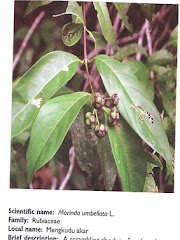Forest management is the branch of forestry concerned with the overall administrative, economic, legal, and social aspects and with the essentially scientific and technical aspects, especially silviculture, protection, and forest regulation. This includes management for aesthetics, fish, recreation, urban values, water, wilderness, wildlife, wood products, forest genetic resources and other forest resource values [1]. Management can be based on conservation, economics, or a mixture of the two. Techniques include timber extraction, planting and replanting of various species, cutting roads and pathways through forests, and preventing fire.
There has been an increased public awareness of natural resource policy, including forest management. Public concern regarding forest management may have shifted from the extraction of timber to the preservation of additional forest resources, including wildlife and old growth forest, protecting biodiversity, watershed management, and recreation. Increased environmental awareness may contribute to an increased public mistrust of forest management professionals.[2]
Many tools like GIS modelling have been developed to improve forest inventory and management planning[3].
Wildlife considerations
The abundance and diversity of birds, mammals, amphibians and other wildlife are affected by strategies and types of forest management.[
Biodiversity is the variation of life forms within a given ecosystem, biome, or on the entire Earth. Biodiversity is often used as a measure of the health of biological systems. The biodiversity found on Earth today consists of many millions of distinct biological species. The year 2010 has been declared as the International Year of Biodiversity.
Biodiversity is not distributed evenly on Earth, but is consistently richer in the tropics and in specific localized regions such as the Cape Floristic Province; it is less rich in polar regions where fewer species are found.
Rapid environmental changes typically cause extinctions.[1] Of all species that have existed on Earth, 99.9 percent are now extinct.[2] Since life began on Earth, five major mass extinctions have led to large and sudden drops in the biodiversity of species. The Phanerozoic eon (the last 540 million years) marked a rapid growth in biodiversity in the Cambrian explosion—a period during which nearly every phylum of multicellular organisms first appeared. The next 400 million years was distinguished by periodic, massive losses of biodiversity classified as mass extinction events. The most recent, the Cretaceous–Tertiary extinction event, occurred 65 million years ago, and has attracted more attention than all others because it killed the dinosaurs.[3]
Today there is concern that the period since the emergence of humans is part of a mass reduction in biodiversity, the Holocene extinction, caused primarily by the impact humans are having on the environment, particularly the destruction of plant and animal habitats. In addition, human practices have caused a loss of genetic biodiversity. The relevance of biodiversity to human health is becoming a major international issue, as scientific evidence is gathered on the global health implications of biodiversity loss
Biodiversity is the variation of life forms within a given ecosystem, biome, or on the entire Earth. Biodiversity is often used as a measure of the health of biological systems. The biodiversity found on Earth today consists of many millions of distinct biological species. The year 2010 has been declared as the International Year of Biodiversity.
Biodiversity is not distributed evenly on Earth, but is consistently richer in the tropics and in specific localized regions such as the Cape Floristic Province; it is less rich in polar regions where fewer species are found.
Rapid environmental changes typically cause extinctions.[1] Of all species that have existed on Earth, 99.9 percent are now extinct.[2] Since life began on Earth, five major mass extinctions have led to large and sudden drops in the biodiversity of species. The Phanerozoic eon (the last 540 million years) marked a rapid growth in biodiversity in the Cambrian explosion—a period during which nearly every phylum of multicellular organisms first appeared. The next 400 million years was distinguished by periodic, massive losses of biodiversity classified as mass extinction events. The most recent, the Cretaceous–Tertiary extinction event, occurred 65 million years ago, and has attracted more attention than all others because it killed the dinosaurs.[3]
Today there is concern that the period since the emergence of humans is part of a mass reduction in biodiversity, the Holocene extinction, caused primarily by the impact humans are having on the environment, particularly the destruction of plant and animal habitats. In addition, human practices have caused a loss of genetic biodiversity. The relevance of biodiversity to human health is becoming a major international issue, as scientific evidence is gathered on the global health implications of biodiversity loss.
The term was used first by wildlife scientist and conservationist Raymond F. Dasmann in a lay book[4] advocating nature conservation. The term was not widely adopted for more than a decade, when in the 1980s it and "biodiversity" came into common usage in science and environmental policy. Use of the term by Thomas Lovejoy in the Foreword to the book[5] credited with launching the field of conservation biology introduced the term along with "conservation biology" to the scientific community. Until then the term "natural diversity" was used in conservation science circles, including by The Science Division of The Nature Conservancy in an important 1975 study, "The Preservation of Natural Diversity." By the early 1980s TNC's Science program and its head Robert E. Jenkins, Lovejoy, and other leading conservation scientists at the time in America advocated the use of "biological diversity" to embrace the object of biological conservation.
The term's contracted form biodiversity may have been coined by W.G. Rosen in 1985 while planning the National Forum on Biological Diversity organized by the National Research Council (NRC) which was to be held in 1986, and first appeared in a publication in 1988 when entomologist E. O. Wilson used it as the title of the proceedings[6] of that forum.[7]
Since this period both terms and the concept have achieved widespread use among biologists, environmentalists, political leaders, and concerned citizens worldwide. The term is sometimes used to equate to a concern for the natural environment and nature conservation. This use has coincided with the expansion of concern over extinction observed in the last decades of the 20th century.
A similar concept in use in the United States, besides natural diversity, is the term "natural heritage." It pre-dates both terms though it is a less scientific term and more easily comprehended in some ways by the wider audience interested in conservation. Furthermore it may be misleading if used to refer only to biodiversity, as natural heritage also includes geology and landforms (geodiversity). The term "Natural Heritage" was used when Jimmy Carter set up the Georgia Heritage Trust while he was governor of Georgia; Carter's trust dealt with both natural and cultural heritage. It would appear that Carter picked the term up from Lyndon Johnson, who used it in a 1966 Message to Congress. "Natural Heritage" was picked up by the Science Division of the US Nature Conservancy when, under Jenkins, it launched in 1974 the network of State Natural Heritage Programs. This network took on a life of its own in the 1990s when it became an independent non-profit organization named NatureServe. When NatureServe was extended outside the USA, the term "Conservation Data Center" was suggested by Guillermo Mann is now also used by several programs, for example those that operate as part of NatureServe Canada.
"Biological diversity" or "biodiversity" can have many interpretations and it is most commonly used to replace the more clearly defined and long established terms, species diversity and species richness. Biologists most often define biodiversity as the "totality of genes, species, and ecosystems of a region". An advantage of this definition is that it seems to describe most circumstances and present a unified view of the traditional three levels at which biological variety has been identified:
species diversity
ecosystem diversity
morphological diversity
genetic diversity
But Professor Anthony Campbell at Cardiff University, UK and the Darwin Centre, Pembrokeshire, has defined a fourth, and critical one: Molecular Diversity (see Campbell, AK J Applied Ecology 2003,40,193-203; Save those molecules: molecular biodiversity and life).
This multilevel conception is consistent with the early use of "biological diversity" in Washington, D.C. and international conservation organizations in the late 1960s through 1970's, by Raymond F. Dasmann who apparently coined the term and Thomas E. Lovejoy who later introduced it to the wider conservation and science communities. An explicit definition consistent with this interpretation was first given in a paper by Bruce A. Wilcox commissioned by the International Union for the Conservation of Nature and Natural Resources (IUCN) for the 1982 World National Parks Conference in Bali [8] The definition Wilcox gave is "Biological diversity is the variety of life forms...at all levels of biological systems (i.e., molecular, organismic, population, species and ecosystem)..." Subsequently, the 1992 United Nations Earth Summit in Rio de Janeiro defined "biological diversity" as "the variability among living organisms from all sources, including, 'inter alia', terrestrial, marine, and other aquatic ecosystems, and the ecological complexes of which they are part: this includes diversity within species, between species and of ecosystems". This is, in fact, the closest thing to a single legally accepted definition of biodiversity, since it is the definition adopted by the United Nations Convention on Biological Diversity.
The current textbook definition of "biodiversity" is "variation of life at all levels of biological organization".[9]
For geneticists, biodiversity is the diversity of genes and organisms. They study processes such as mutations, gene exchanges, and genome dynamics that occur at the DNA level and generate evolution. Consistent with this, along with the above definition the Wilcox paper stated "genes are the ultimate source of biological organization at all levels of biological systems..."
Linking Types of Biodiversity
A complex relationship exists among the different types of diversity. Identifying one type of diversity in a group of organisms does not necessarily indicate its relationship with other types of diversity. However all types of diversity are broadly linked and a numerical study investigating the link between tetrapod taxonomic and ecological diversity of tetrapods (terrestrial vertebrates) shows a very close correlation between the two. [10]
[edit] Measurement
Main article: Measurement of biodiversity
A variety of objective measures have been created in order to empirically measure biodiversity. Each measure of biodiversity relates to a particular use of the data. For practical conservationists, measurements should include a quantification of values that are commonly-shared among locally affected organisms, including humans. For others, a more economically defensible definition should allow the ensuring of continued possibilities for both adaptation and future use by humans, assuring environmental sustainability.
amongst researchers may contribute to biased empirical research for modern estimates of biodiversity. In 1768 Rev. Gilbert White succinctly observed of his Selborne, Hampshire "all nature is so full, that that district produces the most variety which is the most examined."[11]
Nevertheless, biodiversity is not distributed evenly on Earth. It is consistently richer in the tropics and in other localized regions such as the Cape Floristic Province. As one approaches polar regions one generally finds fewer species. Flora and fauna diversity depends on climate, altitude, soils and the presence of other species. In the year 2006 large numbers of the Earth's species were formally classified as rare or endangered or threatened species; moreover, many scientists have estimated that there are millions more species actually endangered which have not yet been formally recognized. About 40 percent of the 40,177 species assessed using the IUCN Red List criteria, are now listed as threatened species with extinction - a total of 16,119 species.[12]
Even though biodiversity declines from the equator to the poles in terrestrial ecoregions, whether this is so in aquatic ecosystems is still a hypothesis to be tested, especially in marine ecosystems where causes of this phenomenon are unclear.[13] In addition, particularly in marine ecosystems, there are several well stated cases where diversity in higher latitudes actually increases. Therefore, the lack of information on biodiversity of Tropics and Polar Regions prevents scientific conclusions on the distribution of the world’s aquatic biodiversity.
A biodiversity hotspot is a region with a high level of endemic species. These biodiversity hotspots were first identified in 1988 by Dr. Norman Myers in two articles in the scientific journal The Environmentalist.[14][15] Dense human habitation tends to occur near hotspots. Most hotspots are located in the tropics and most of them are forests.
Brazil's Atlantic Forest is considered a hotspot of biodiversity and contains roughly 20,000 plant species, 1350 vertebrates, and millions of insects, about half of which occur nowhere else in the world. The island of Madagascar including the unique Madagascar dry deciduous forests and lowland rainforests possess a very high ratio of species endemism and biodiversity, since the island separated from mainland Africa 65 million years ago, most of the species and ecosystems have evolved independently producing unique species different from those in other parts of Africa.
Many regions of high biodiversity (as well as high endemism) arise from very specialized habitats which require unusual adaptation mechanisms, for example alpine environments in high mountains, or the peat bogs of Northern Europe.
Biodiversity found on Earth today is the result of 3.5 billion years of evolution. The origin of life has not been definitely established by science, however some evidence suggests that life may already have been well-established a few hundred million years after the formation of the Earth. Until approximately 600 million years ago, all life consisted of archaea, bacteria, protozoans and similar single-celled organisms.
The history of biodiversity during the Phanerozoic (the last 540 million years), starts with rapid growth during the Cambrian explosion—a period during which nearly every phylum of multicellular organisms first appeared. Over the next 400 million years or so, global diversity showed little overall trend, but was marked by periodic, massive losses of diversity classified as mass extinction events.
The apparent biodiversity shown in the fossil record suggests that the last few million years include the period of greatest biodiversity in the Earth's history. However, not all scientists support this view, since there is considerable uncertainty as to how strongly the fossil record is biased by the greater availability and preservation of recent geologic sections. Some (e.g. Alroy et al. 2001) argue that, corrected for sampling artifacts, modern biodiversity is not much different from biodiversity 300 million years ago.[16] Estimates of the present global macroscopic species diversity vary from 2 million to 100 million species, with a best estimate of somewhere near 13–14 million, the vast majority of them arthropods.[17]
The existence of a global carrying capacity has been debated, that is to say that there is a limit to the number of species that can live on this planet. While records of life in the sea shows a logistic pattern of growth, life on land (insects, plants and tetrapods)shows an exponential rise in diversity. As one author states, "Tetrapods have not yet invaded 64 per cent of potentially habitable modes, and it could be that without human influence the ecological and taxonomic diversity of tetrapods would continue to increase in an exponential fashion until most or all of the available ecospace is filled."[18]
Most biologists agree however that the period since the emergence of humans is part of a new mass extinction, the Holocene extinction event, caused primarily by the impact humans are having on the environment.[19] It has been argued that the present rate of extinction is sufficient to eliminate most species on the planet Earth within 100 years.[20]
New species are regularly discovered (on average between 5–10,000 new species each year, most of them insects) and many, though discovered, are not yet classified (estimates are that nearly 90% of all arthropods are not yet classified).[17] Most of the terrestrial diversity is found in tropical forests.
Biodiversity also supports a number of natural ecosystem processes and services.[21] Some ecosystem services that benefit society are air quality,[22] climate (both global CO2 sequestration and local), water purification, pollination, and prevention of erosion.[22]
Since the stone age, species loss has been accelerated above the geological rate by human activity. The rate of species extinction is difficult to estimate, but it has been estimated that species are now being lost at a rate approximately 100 times as fast as is typical in the geological record, or perhaps as high as 10 000 times as fast.[23] To feed such a large population, more land is being transformed from wilderness with wildlife into agricultural, mining, lumbering, and urban areas for humans.
Non-material benefits that are obtained from ecosystems include spiritual and aesthetic values, knowledge systems and the value of education.
[edit] Agriculture
See also: Agricultural biodiversity
The economic value of the reservoir of genetic traits present in wild varieties and traditionally grown landraces is extremely important in improving crop performance[citation needed]. Important crops, such as the potato and coffee, are often derived from only a few genetic strains[citation needed]. Improvements in crop plants over the last 250 years have been largely due to harnessing the genetic diversity present in wild and domestic crop plants[citation needed]. Interbreeding crops strains with different beneficial traits has resulted in more than doubling crop production in the last 50 years as a result of the Green Revolution[citation needed].
Crop diversity is also necessary to help the system recover when the dominant crop type is attacked by a disease:
The Irish potato blight of 1846, which was a major factor in the deaths of a million people and migration of another million, was the result of planting only two potato varieties, both of which were vulnerable.
When rice grassy stunt virus struck rice fields from Indonesia to India in the 1970s, 6273 varieties were tested for resistance.[24] One was found to be resistant, an Indian variety, known to science only since 1966.[24] This variety formed a hybrid with other varieties and is now widely grown.[24]
Coffee rust attacked coffee plantations in Sri Lanka, Brazil, and Central America in 1970. A resistant variety was found in Ethiopia.[25] Although the diseases are themselves a form of biodiversity.
Monoculture, the lack of biodiversity, was a contributing factor to several agricultural disasters in history, the European wine industry collapse in the late 1800s, and the US Southern Corn Leaf Blight epidemic of 1970.[26] Higher biodiversity also controls the spread of certain diseases as pathogens will need to adapt to infect different species[citation needed].
Biodiversity provides food for humans[citation needed]. Although about 80 percent of our food supply comes from just 20 kinds of plants[citation needed], humans use at least 40,000 species of plants and animals a day[citation needed]. Many people around the world depend on these species for their food, shelter, and clothing[citation needed]. There is untapped potential for increasing the range of food products suitable for human consumption, provided that the high present extinction rate can be stopped.[20]
Human health
The relevance of biodiversity to human health is becoming a major international political issue, as scientific evidence builds on the global health implications of biodiversity loss.[27][28][29] This issue is closely linked with the issue of climate change,[30] as many of the anticipated health risks of climate change are associated with changes in biodiversity (e.g. changes in populations and distribution of disease vectors, scarcity of fresh water, impacts on agricultural biodiversity and food resources etc). Some of the health issues influenced by biodiversity include dietary health and nutrition security, infectious diseases, medical science and medicinal resources, social and psychological health,[31] and spiritual well-being. Biodiversity is also known to have an important role in reducing disaster risk, and in post-disaster relief and recovery efforts.[32][33]
One of the key health issues associated with biodiversity is that of drug discovery and the availability of medicinal resources.[34] A significant proportion of drugs are derived, directly or indirectly, from biological sources; Chivian and Bernstein report that at least 50% of the pharmaceutical compounds on the market in the US are derived from natural compounds found in plants, animals, and microorganisms, while about 80% of the world population depends on medicines from nature (used in either modern or traditional medical practice) for primary healthcare.[28] Moreover, only a tiny proportion of the total diversity of wild species has been investigated for potential sources of new drugs. Through the field of bionics, considerable technological advancement has occurred which would not have without a rich biodiversity. It has been argued, based on evidence from market analysis and biodiversity science, that the decline in output from the pharmaceutical sector since the mid-1980s can be attributed to a move away from natural product exploration ("bioprospecting") in favour of R&D programmes based on genomics and synthetic chemistry, neither of which have yielded the expected product outputs; meanwhile, there is evidence that natural product chemistry can provide the basis for innovation which can yield significant economic and health benefits.[35][36] Marine ecosystems are of particular interest in this regard,[37] however unregulated and inappropriate bioprospecting can be considered a form of over-exploitation which has the potential to degrade ecosystems and increase biodiversity loss, as well as impacting on the rights of the communities and states from which the resources are taken.[38][39][40]
A wide range of industrial materials are derived directly from biological resources. These include building materials, fibers, dyes, resirubber and oil. There is enormous potential for further research into sustainably utilizing materials from a wider diversity of organisms. In addition, biodiversity and the ecosystem goods and services it provides are considered to be fundamental to healthy economic systems. The degree to which biodiversity supports business varies between regions and between economic sectors, however the importance of biodiversity to issues of resource security (water quantity and quality, timber, paper and fibre, food and medicinal resources etc) are increasingly recognized as universal.[41][42][43] As a result, the loss of biodiversity is increasingly recognized as a significant risk factor in business development and a threat to long term economic sustainability. A number of case studies recently compiled by the World Resources Institute demonstrate some of these risks as identified by specific industries.[44]
Other ecological services
See also: Ecological effects of biodiversity
Biodiversity provides many ecosystem services that are often not readily visible. It plays a part in regulating the chemistry of our atmosphere and water supply. Biodiversity is directly involved in water purification, recycling nutrients and providing fertile soils. Experiments with controlled environments have shown that humans cannot easily build ecosystems to support human needs; for example insect pollination cannot be mimicked by human-made construction, and that activity alone represents tens of billions of dollars in ecosystem services per year to humankind.
The stability of ecosystems is also related to biodiversity, with higher biodiversity producing greater stability over time, reducing the chance that ecosystem services will be disrupted as a result of disturbances such as extreme weather events or human exploitation.
Leisure, cultural and aesthetic value
Many people derive value from biodiversity through leisure activities such as hiking, birdwatching or natural history study. Biodiversity has inspired musicians, painters, sculptors, writers and other artists. Many cultural groups view themselves as an integral part of the natural world and show respect for other living organisms.
Popular activities such as gardening, caring for aquariums and collecting butterflies are all strongly dependent on biodiversity. The number of species involved in such pursuits is in the tens of thousands, though the great majority do not enter mainstream commercialism.
The relationships between the original natural areas of these often 'exotic' animals and plants and commercial collectors, suppliers, breeders, propagators and those who promote their understanding and enjoyment are complex and poorly understood. It seems clear, however, that the general public responds well to exposure to rare and unusual organisms—they recognize their inherent value at some level. A family outing to the botanical garden or zoo is as much an aesthetic or cultural experience as it is an educational one.
Philosophically it could be argued that biodiversity has intrinsic aesthetic and spiritual value to mankind in and of itself. This idea can be used as a counterweight to the notion that tropical forests and other ecological realms are only worthy of conservation because they may contain medicines or useful products.
An interesting point is that evolved DNA embodies knowledge,[45] and therefore destroying a species resembles burning a book, with the caveat that the book is of uncertain depth and importance and may in fact be best used as fuel.
[edit] Number of species
Main article: Species
According to the Global Taxonomy Initiative[46] and the European Distributed Institute of Taxonomy, the total number of species for some phyla may be much higher as what we know currently:
10–30 million insects;[47] (of some 0,9 we know today [48])
5–10 million bacteria;[49]
1.5 million fungi;[50] (of some 0,4 million we know today [48])
~1 million mites[51]
Due to the fact that we know but a portion of the organisms in the biosphere, we do not have a complete understanding of the workings of our environment. To make matters worse, according to professor James Mallet, we are wiping out these species at an unprecedented rate.[52] This means that even before a species has had the chance of being discovered, studied and classified, it may already be extinct.
Threats
During the last century, decreases in biodiversity have been increasingly observed. Studies[by whom?] show that 30% of all natural species will be extinct by 2050.[53] Of these, about one eighth of the known plant species are threatened with extinction.[54] Some estimates put the loss at up to 140,000 species per year (based on Species-area theory) and subject to discussion.[55] This figure indicates unsustainable ecological practices, because only a small number of species come into being each year. Almost all scientists acknowledge [54] that the rate of species loss is greater now than at any time in human history, with extinctions occurring at rates hundreds of times higher than background extinction rates.
The factors that threaten biodiversity have been variously categorized. Jared Diamond describes an "Evil Quartet" of habitat destruction, overkill, introduced species, and secondary extensions. Edward O. Wilson prefers the acronym HIPPO, standing for Habitat destruction, Invasive species, Pollution, Human Over Population, and Overharvesting.[56][57] The most authoritative classification in use today is that of IUCN’s Classification of Direct Threats[58] adopted by most major international conservation organizations such as the US Nature Conservancy, the World Wildlife Fund, Conservation International, and Birdlife International.
Destruction of habitat
Most of the species extinctions from 1000 AD to 2000 AD are due to human activities, in particular destruction of plant and animal habitats. Raised rates of extinction are being driven by human consumption of organic resources, especially related to tropical forest destruction.[59] While most of the species that are becoming extinct are not food species, their biomass is converted into human food when their habitat is transformed into pasture, cropland, and orchards[60]. It is estimated that more than a third of the Earth's biomass[61] is tied up in only the few species that represent humans, livestock and crops. Because an ecosystem decreases in stability as its species are made extinct, these studies warn that the global ecosystem is destined for collapse if it is further reduced in complexity. Factors contributing to loss of biodiversity are: overpopulation, deforestation, pollution (air pollution, water pollution, soil contamination) and global warming or climate change, driven by human activity. These factors, while all stemming from overpopulation, produce a cumulative impact upon biodiversity.
There are systematic relationships between the area of a habitat and the number of species it can support, with greater sensitivity to reduction in habitat area for species of larger body size and for those living at lower latitudes or in forests or oceans.[62] Some characterize loss of biodiversity not as ecosystem degradation but by conversion to trivial standardized ecosystems (e.g., monoculture following deforestation). In some countries lack of property rights or access regulation to biotic resources necessarily leads to biodiversity loss (degradation costs having to be supported by the community).
A September 14, 2007 study conducted by the National Science Foundation found that biodiversity and genetic diversity are dependent upon each other—that diversity within a species is necessary to maintain diversity among species, and vice versa. According to the lead researcher in the study, Dr. Richard Lankau, "If any one type is removed from the system, the cycle can break down, and the community becomes dominated by a single species."[63]
At present, the most threathened ecosystems are those found in fresh water. The marking of fresh water ecosystems as the ecosystems most under threat was done by the Millennium Ecosystem Assessment 2005, and was confirmed again by the project "Freshwater Animal Diversity Assessment", organised by the biodiversity platform, and the French Institut de recherche pour le développement (MNHNP).[64]
[edit] Exotic species
The rich diversity of unique species across many parts of the world exist only because they are separated by barriers, particularly large rivers, seas, oceans, mountains and deserts from other species of other land masses, particularly the highly fecund, ultra-competitive, generalist "super-species". These are barriers that couldn't have been easily crossed by natural processes, except through continental drift. However, humans have invented transportation with the ability to bring into contact species that they've never met in their evolutionary history; also, this is done on a time scale of days, unlike the centuries that historically have accompanied major animal migrations. As these species that never met before come in contact with each other, the rate at which species are extincting is increasing still. See below for an example.
The widespread introduction of exotic species by humans is a potent threat to biodiversity. When exotic species are introduced to ecosystems and establish self-sustaining populations, the endemic species in that ecosystem that have not evolved to cope with the exotic species may not survive. The exotic organisms may be either predators, parasites, or simply aggressive species that deprive indigenous species of nutrients, water and light. These invasive species often have features, due to their evolutionary background and new environment, that make them highly competitive; able to become well-established and spread quickly, reducing the effective habitat of endemic species.
Exotic species are introduced by human, either unwillingly or intentionally. Examples on unwilling introduction are fore example ladybugs, ... These were bred to help in combating pests in agriculture (for greenhouses). Other examples of unwilling introduction are species that are unknowingly brought in by vessel or automotive. These include certain bacteria, spiders, seeds of certain plants. Examples of intentional introduction are the planting of exotic plants in gardens. It is clear that with simple measures the preventing of the spread of exotic plants, yet as of present, trying to reduce the inflow of exotic species has remained low on the political agenda. Also, the intentional planting of species that are marked as "indiginous", yet are from a non-indigenous strain can be considered exotic and create problems in the ecosystem. For example in Belgium, Prunus spinosa (an indigenous species) that originates from Eastern Europe has been introduced. This has created problems, as the this tree species comes into leave much sooner than their West European counterparts, bringing the Thecla betulae butterfly (which feed on the leaves) into trouble.
As a consequence of the above, if humans continue to combine species from different ecoregions, there is the potential that the world's ecosystems will end up dominated by relatively a few, aggressive, cosmopolitan "super-species".
At present, several countries have already imported so much exotic species, that the own indigenous fauna/flora is greatly outnumbered. For example, in Belgium, only 5% of the indigenous trees remain.[65][66]
In 2004, an international team of scientists estimated that 10 percent of species would become extinct by 2050 because of global warming.[67] “We need to limit climate change or we wind up with a lot of species in trouble, possibly extinct,” said Dr. Lee Hannah, a co-author of the paper and chief climate change biologist at the Center for Applied Biodiversity Science at Conservation International.
Genetic pollution
Main article: Genetic pollution
Purebred naturally evolved region specific wild species can be threatened with extinction[68] through the process of genetic pollution i.e. uncontrolled hybridization, introgression and genetic swamping which leads to homogenization or replacement of local genotypes as a result of either a numerical and/or fitness advantage of introduced plant or animal.[69] Nonnative species can bring about a form of extinction of native plants and animals by hybridization and introgression either through purposeful introduction by humans or through habitat modification, bringing previously isolated species into contact. These phenomena can be especially detrimental for rare species coming into contact with more abundant ones. The abundant species can interbreed with the rarer, swamping the entire gene pool and creating hybrids, thus driving the entire native stock to complete extinction. Attention has to be focused on the extent of this under appreciated problem that is not always apparent from morphological (outward appearance) observations alone. Some degree of gene flow may be a normal, evolutionarily constructive, process, and all constellations of genes and genotypes cannot be preserved. However, hybridization with or without introgression may, nevertheless, threaten a rare species' existence.[70][71]
In agriculture and animal husbandry, the green revolution popularized the use of conventional hybridization to increase yield by creating "high-yielding varieties". Often the handful of hybridized breeds originated in developed countries and were further hybridized with local varieties in the rest of the developing world to create high yield strains resistant to local climate and diseases. Local governments and industry have been pushing hybridization which has resulted in several of the indigenous breeds becoming extinct or threatened. Disuse because of unprofitability and uncontrolled intentional and unintentional cross-pollination and crossbreeding (genetic pollution), formerly huge gene pools of various wild and indigenous breeds have collapsed causing widespread genetic erosion and genetic pollution. This has resulted in loss of genetic diversity and biodiversity as a whole.[72]
A genetically modified organism (GMO) is an organism whose genetic material has been altered using the genetic engineering techniques generally known as recombinant DNA technology. Genetically Modified (GM) crops today have become a common source for genetic pollution, not only of wild varieties but also of other domesticated varieties derived from relatively natural hybridization.[73][74][75][76][77]
Genetic erosion coupled with genetic pollution may be destroying unique genotypes, thereby creating a hidden crisis which could result in a severe threat to our food security. Diverse genetic material could cease to exist which would impact our ability to further hybridize food crops and livestock against more resistant diseases and climatic changes.[72]
[edit] Climate Change
Main article: Effect of Climate Change on Plant Biodiversity
The recent phenomenon of global warming is also considered to be a major threat to global biodiversity.[citation needed] For example coral reefs -which are biodiversity hotspots- will be lost in 20 to 40 years if global warming continues at the current trend.[78]
Conserving biodiversity
Main article: Conservation biology
conservation biology matured in the mid- 20th century as ecologists, naturalists, and other scientists began to collectively research and address issues pertaining to global declines in biodiversity.[79][80][81] The conservation ethic differs from the preservationist ethic, historically lead by John Muir, who advocate for protected areas devoid of human exploitation or interference for profit.[80] The conservation ethic advocates for wise stewardship and management of natural resource production for the purpose of protecting and sustaining biodiversity in species, ecosystems, the evolutionary process, and human culture and society.[79][81][82][83] Conservation biologists are concerned with the trends in biodiversity being reported in this era, which has been labeled by science as the Holocene extinction period, also known as the sixth mass extinction.[84] Rates of decline in biodiversity in this sixth mass extinction match or exceed rates of loss in the five previous mass extinction events recorded in the fossil record.[84][85][86][87][88] Loss of biodiversity results in the loss of natural capital that supplies ecosystem goods and services. The economic value of 17 ecosystem services for the entire biosphere (calculated in 1997) has an estimated average value of US$ 33 trillion (1012) per year![89]
A schematic image illustrating the relationship between biodiversity, ecosystem services, human well-being, and poverty.[90] The illustration shows where conservation action, strategies and plans can influence the drivers of the current biodiversity crisis at local, regional, to global scales.In response to the extinction crisis, the research of conservation biologists is being organized into strategic plans that include principles, guidelines, and tools for the purpose of protecting biodiversity.[79][91][92] Conservation biology is a crisis orientated discipline and it is multi-disciplinary, including ecological, social, education, and other scientific disciplines outside of biology. Conservation biologists work in both the field and office, in government, universities, non-profit organizations and in industry.[79][81] The conservation of biological diversity is a global priority in strategic conservation plans that are designed to engage public policy and concerns affecting local, regional and global scales of communities, ecosystems, and cultures.[93] Conserving biodiversity and action plans identify ways of sustaining human well-being and global economics, including natural capital, market capital, and ecosystem services.[94][95]
Means
One of the strategies involves placing a monetary value on biodiversity through biodiversity banking, of which one example is the Australian Native Vegetation Management Framework. Other approaches are the creation of gene banks, as well as the creation of gene banks that have the intention of growing the indigenous species for reintroduction to the ecosystem (eg via tree nurseries, ...)[96] The eradication of exotic species is also an important method to preserve the local biodiversity. Exotic species that have become a pest can be identified using taxonomy (eg with DAISY, barcode of life[97], ...) and can then be eradicated. [98]This method however can only be used against a large group of a certain exotic organism due to the econimic cost. Other measures contributing to the preservation of biodiversity include: the reduction of pesticide use and/or a switching to organic pesticides, ... These measures however, are of less importance than the preserving of rural lands, reintroduction of indigenous species and the removal of exotic species. Finally, if the continued preservation of native organisms in an area can be guaranteed, efforts can be made in trying to reintroduce eliminated native species back into the environment. This can be done by first determining which species were indigenous to the area, and then reintroducing them. This determination can be done using databases as the Encyclopedia_of_life, Global Biodiversity Information Facility, ... Extermination is usually done with either (ecological) pesticides, or natural predators.
Strategies
As noted above (Distribution), biodiversity is not as rich everywhere on the planet. Regions such as the tropics and subtropics are considerably much richer in biodiversity than regions in temperate climates. In addition, in temperate climates, a lot of countries are located which are already vastly urbanised, and require -in addition- great amounts of space for the growing of crops. As rehabilitating the biodiversity within these countries would again require the clearing and redeveloping of spaces, it has been proposed of some that efforts are best instead directed unto the tropics. Arguments include economics, it would be far less costly and more efficient to preserve the biodiversity in the tropics, especially as many countries in these areas are only now beginning to urbanise.[99]
However, only directing the efforts into these areas would not be enough, as many species still need to migrate at certain times of the year, requiring a connection to other regions/countries. In the more urbanised countries in temperate climates, this would mean that wildlife corridors need to be made. However, making wildlife corridors would still be considerably cheaper and easier than clearing/preserving entirely new areas.
Judicial status
Biodiversity is beginning to be evaluated and its evolution analysed (through observations, inventories, conservation...) as well as being taken into account in political and judicial decisions:
The relationship between law and ecosystems is very ancient and has consequences for biodiversity. It is related to property rights, both private and public. It can define protection for threatened ecosystems, but also some rights and duties (for example, fishing rights, hunting rights).
Law regarding species is a more recent issue. It defines species that must be protected because they may be threatened by extinction. The U.S. Endangered Species Act is an example of an attempt to address the "law and species" issue.
Laws regarding gene pools are only about a century old[citation needed]. While the genetic approach is not new (domestication, plant traditional selection methods), progress made in the genetic field in the past 20 years have led to a tightening of laws in this field. With the new technologies of genetic analysis and genetic engineering, people are going through gene patenting, processes patenting, and a totally new concept of genetic resources.[100] A very hot debate today seeks to define whether the resource is the gene, the organism itself, or its DNA.
The 1972 UNESCO World Heritage convention established that biological resources, such as plants, were the common heritage of mankind. These rules probably inspired the creation of great public banks of genetic resources, located outside the source-countries.
New global agreements (e.g.Convention on Biological Diversity), now give sovereign national rights over biological resources (not property). The idea of static conservation of biodiversity is disappearing and being replaced by the idea of dynamic conservation, through the notion of resource and innovation.
The new agreements commit countries to conserve biodiversity, develop resources for sustainability and share the benefits resulting from their use. Under new rules, it is expected that bioprospecting or collection of natural products has to be allowed by the biodiversity-rich country, in exchange for a share of the benefits.
Sovereignty principles can rely upon what is better known as Access and Benefit Sharing Agreements (ABAs). The Convention on Biodiversity spirit implies a prior informed consent between the source country and the collector, to establish which resource will be used and for what, and to settle on a fair agreement on benefit sharing. Bioprospecting can become a type of biopiracy when those principles are not respected.
Uniform approval for use of biodiversity as a legal standard has not been achieved, however. At least one legal commentator has argued that biodiversity should not be used as a legal standard, arguing that the multiple layers of scientific uncertainty inherent in the concept of biodiversity will cause administrative waste and increase litigation without promoting preservation goals. See Fred Bosselman, A Dozen Biodiversity Puzzles, 12 N.Y.U. Environmental Law Journal 364 (2004)
Analytical limits
Taxonomic and size bias
Less than 1% of all species that have been described have been studied beyond simply noting their existence.[101] Biodiversity researcher Sean Nee points out that the vast majority of Earth's biodiversity is microbial, and that contemporary biodiversity physics is "firmly fixated on the visible world" (Nee uses "visible" as a synonym for macroscopic).[102] For example, microbial life is very much more metabolically and environmentally diverse than multicellular life (see extremophile). Nee has stated: "On the tree of life, based on analyses of small-subunit ribosomal RNA, visible life consists of barely noticeable twigs.
The size bias is not restricted to consideration of microbes. Entomologist Nigel Stork states that "to a first approximation, all multicellular species on Earth are insects".[103] Even in insects, however, the extinction rate is high and indicative of the general trend of the sixth greatest extinction period that human society is faced with.[104][105] Moreover, there are species co-extinctions, such as plants and beetles, where the extinction or decline in one is reciprocated in the other.[106]
Definition
Biodiversity is the variety of life: the different plants, animals and micro-organisms, their genes and the ecosystems of which they are a part. [107]
“Biodiversity” is often defined as the variety of all forms of life, from genes to species, through to the broad scale of ecosystems (for a list of variants on this simple definition see Gaston 1996). "
أَلَمْ تَرَ أَنَّ اللَّهَ يُسَبِّحُ لَهُ مَنْ فِي السَّمَاوَاتِ وَالأرْضِ وَالطَّيْرُ صَافَّاتٍ كُلٌّ قَدْ عَلِمَ صَلاتَهُ وَتَسْبِيحَهُ وَاللَّهُ عَلِيمٌ بِمَا يَفْعَلُونَ Tidakkah kamu tahu bahwasanya Allah: kepada-Nya bertasbih apa yang di langit dan di bumi dan (juga) burung dengan mengembangkan sayapnya. Masing-masing telah mengetahui (cara) solat dan tasbihnya, dan Allah Amat Mengetahui apa yang mereka kerjakan. an-Nur:41
Tazkirah
Sami Yusuf_try not to cry
mu'allim Muhammad Rasulullah Sallallahu alaihi waSalam
ummi_mak_mother_ibu_Sami Yusuf
zikir Tok Guru Nik Abdul Aziz Nik Mat Mu'allimul Mursyidi
syeikh masyari afasi
ruang rindu
song
Arisu Rozah
Usia 40

Mudah mudahan diluaskan rezeki anugerah Allah
usia 40 tahun

UPM

Kuatan Pahe Darul Makmur
pemakaian serban semsa menunaikan solat_InsyaAllah ada sawaaban anugerah Allah
Rempuh halangan

Abah_menyokong kuat oengajian Ijazah UPM

usia 39 tahun

usia 23 tahun_UPM
An_Namiru

Ijazah Pengurusan Hutan UPM

General Lumber_Nik Mahmud Nik Hasan

Chengal

Tauliah

Semasa tugas dgn general lumber

PALAPES UPM

UPM

Rumah yang lawa

Muhammad_Abdullah CD
semasa bermukim di Kuatan Pahe Darul Makmur
Ijazah

air terjun

Borneo land

GREEN PEACE
GREEN PEACE
Kelang

Ahlul Bayti_ Sayid Alawi Al Maliki

Asadu_ Tenang serta Berani

atTiflatul Falasthiniin

Sayid Muhammad Ahlul Bayt keturunan Rasulullah

AnNamiru_SAFARI_Kembara

AnNamiru_resting
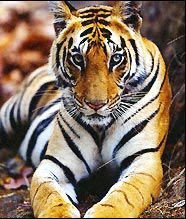
Hamas

sabaha anNamiru fil nahri

Namir sedang membersih

Tok Guru Mualimul_Mursyid

An_Namiru
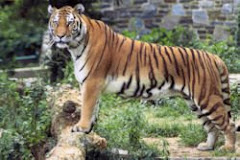.jpg)
Namir_istirehat
.jpg)
SaaRa AnNamiru fil_Midan
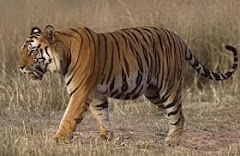.jpg)
Renungan Sang Harimau_Sabaha AnNamiru
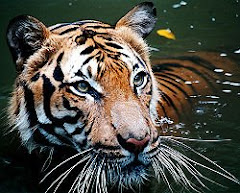.jpg)
Syaraba AnNamiru Ma_A
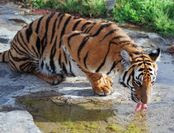.jpg)
AnNamiru_Riadhah
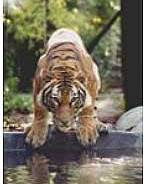.jpg)
AnNamiru_Riadhah
.jpg)
AnNimru ma_A waladuha
Namir fil_Ghabi (sebut Robi...
Namir

AdDubbu_Beruang di hutan

Amu Syahidan Wa La Tuba lil_A'duwwi

AsSyahid

Namir

Tangkas
najwa dan irah

sungai

najwa

najwa

Kaabatul musyarrafah

unta

Jabal Rahmah

masjid nabawi

masjid quba

dr.eg

najwa dan hadhirah

along[macho]
![along[macho]](https://blogger.googleusercontent.com/img/b/R29vZ2xl/AVvXsEjuMi7D33CmR0_KXrCW2XigfLcUuQurcvtqOS139ncCwEzCyB-jUopk7QK7anADIenJEm2S0N6gAY1ubnACYXewgiAsI3rBjnLTawM39alLL-rEopOoVqn0w5WpLhPJH3hrXNtchEhgtyaI/s240/P7150023.JPG)
harissa dan hadhirah

adik beradik
Tongkat Ali

Tongkat Ali
herba kacip Fatimah
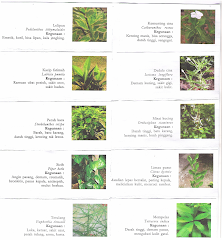
herba Kacip Fatimah
hempedu beruang
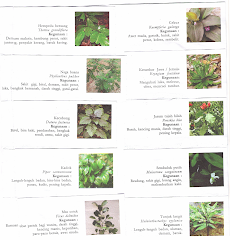
hempedu beruang
hempedu bumi

hempedu bumi
herba misai kucing

herba misai kucing
herba tongkat Ali
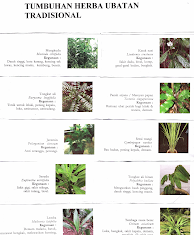.png)
Tongkat Ali
Ulama'

Ulama'
kapal terbang milik kerajaan negara ini yang dipakai pemimpin negara

kapal terbang
Adakah Insan ini Syahid

Syahid
Tok Ayah Haji Ismail

Saifuddin bersama Zakaria

Dinner....
Sukacita Kedatangan Tetamu
Pengikut
Kalimah Yang Baik

Ubi Jaga
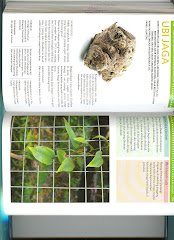
Ubi Jaga
Arkib Blog
Burung Lang Rajawali

Chinese Sparrowhawk
Kelicap Mayang Kelapa
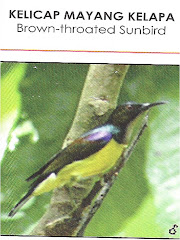
Brown-Throated Sunbird
Kopiah

Pokok Damar Minyak

Kacip Fatimah
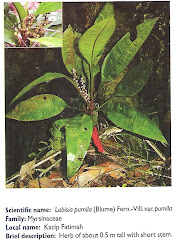
Mengkudu Akar
